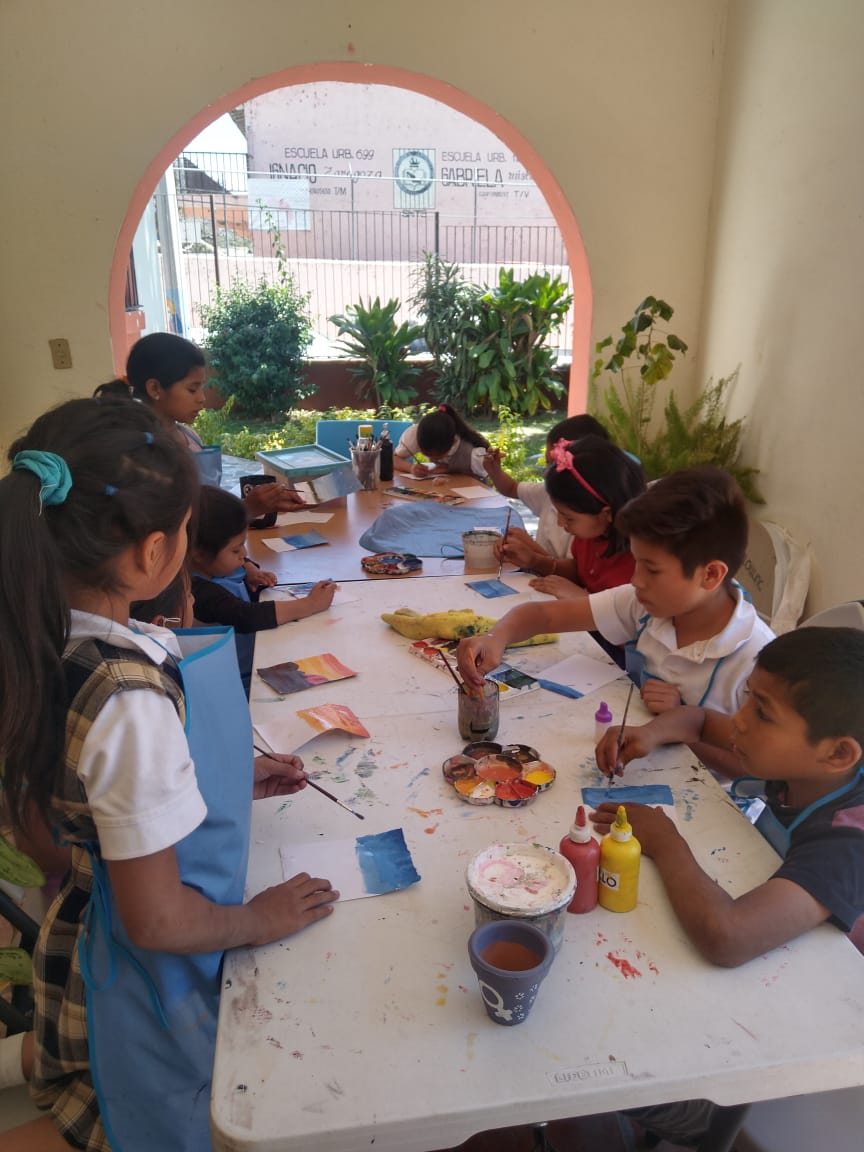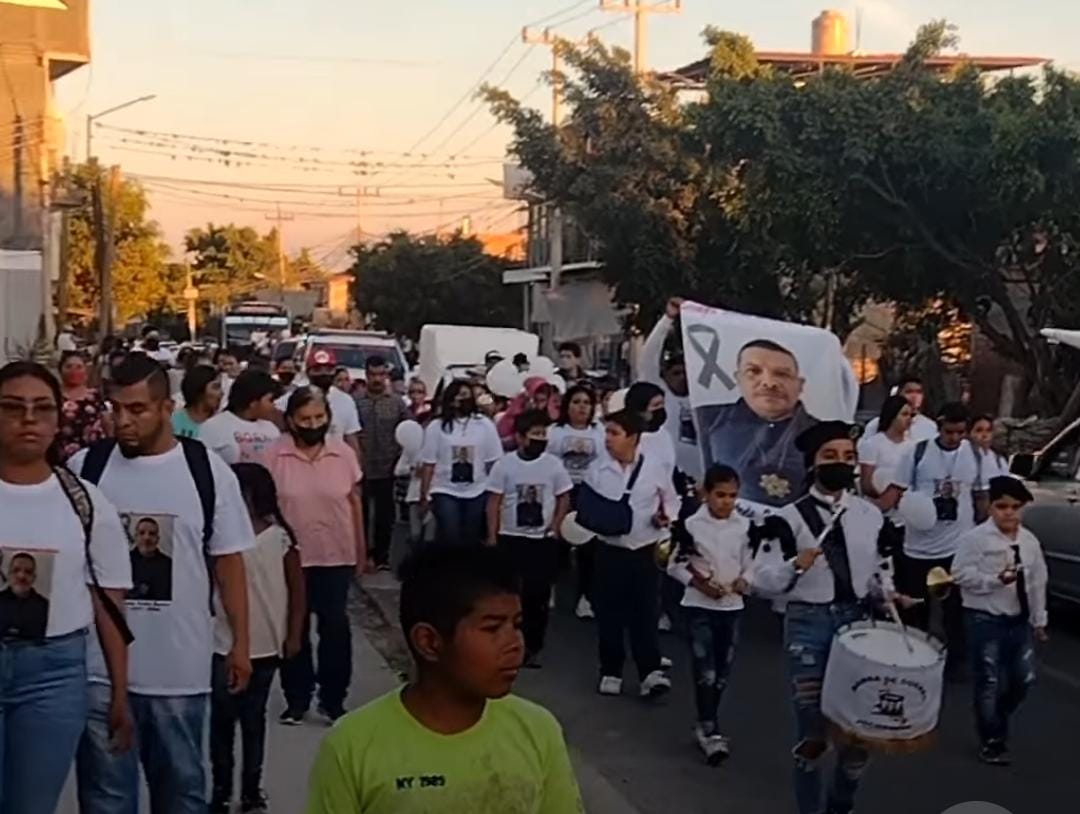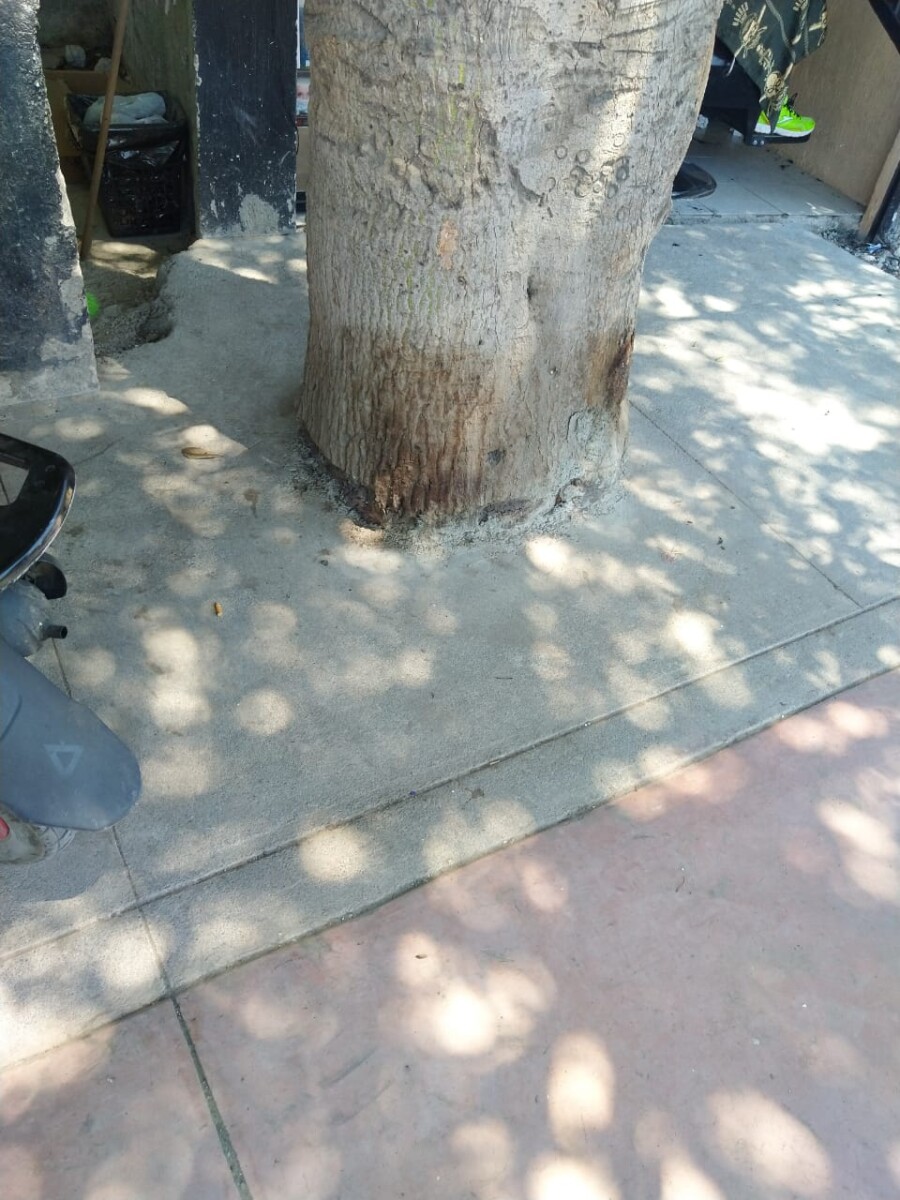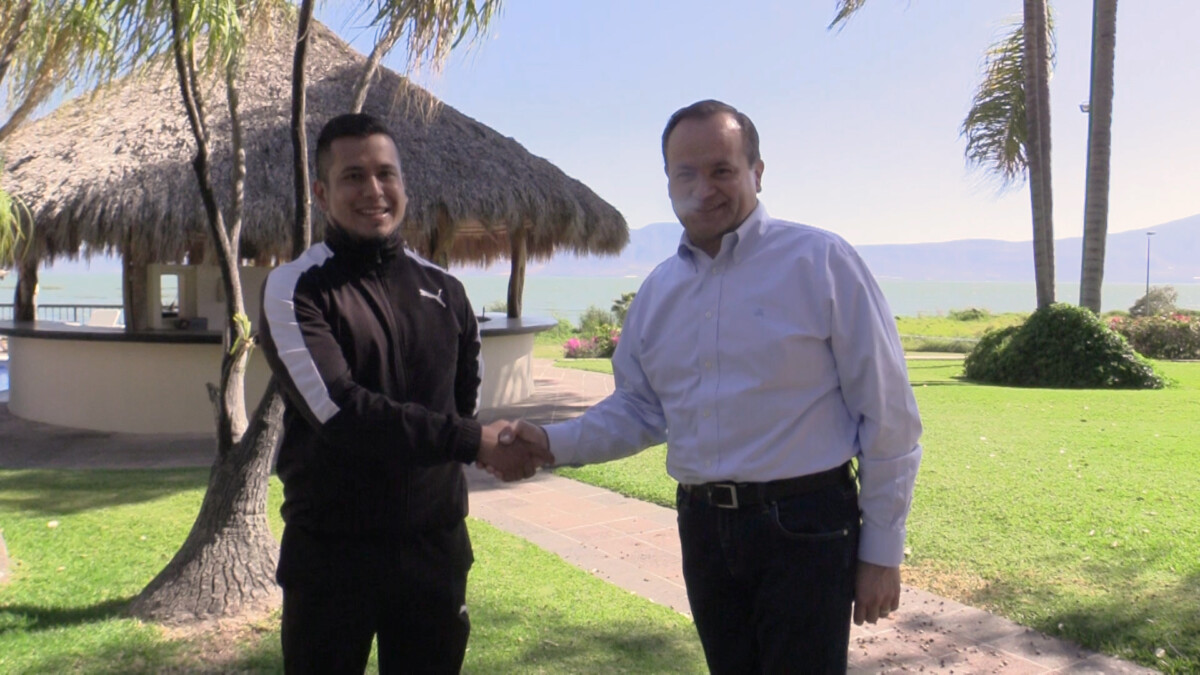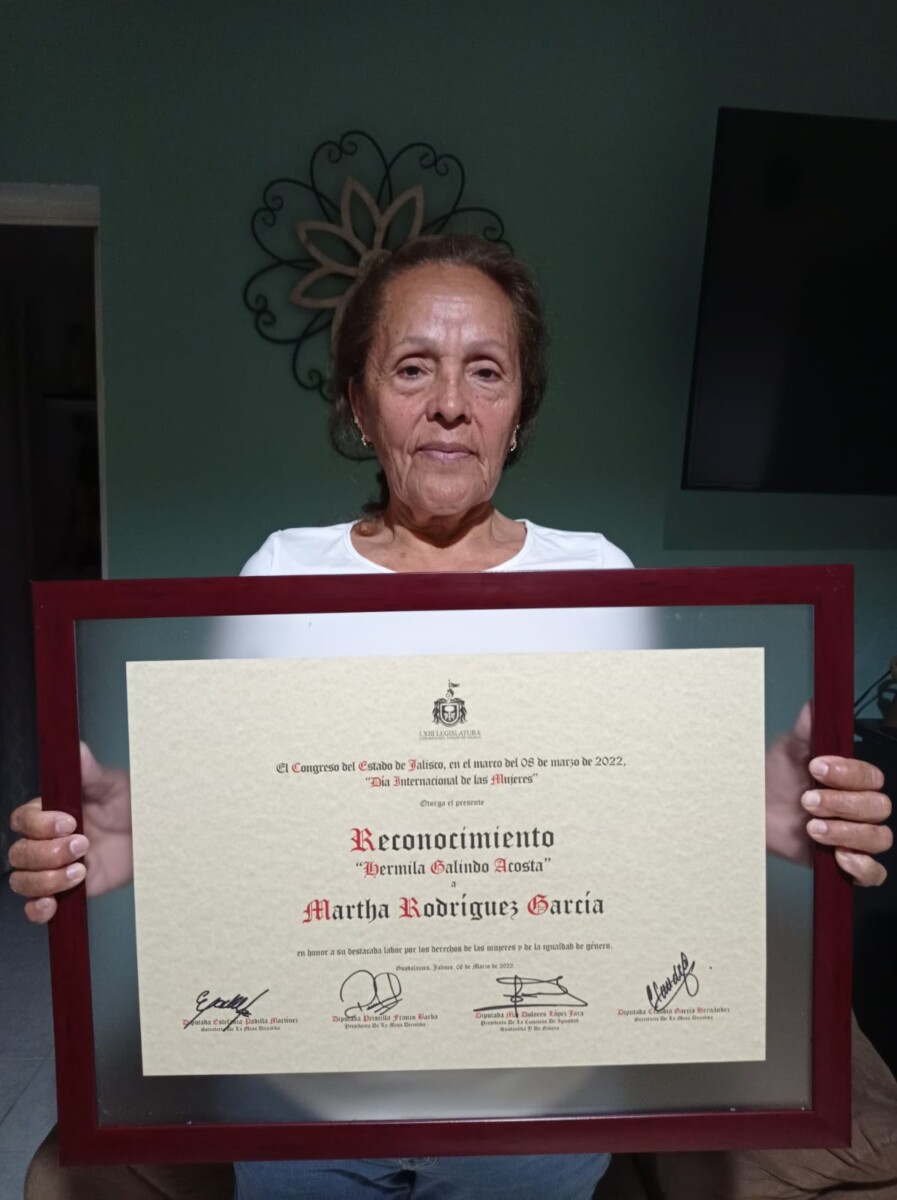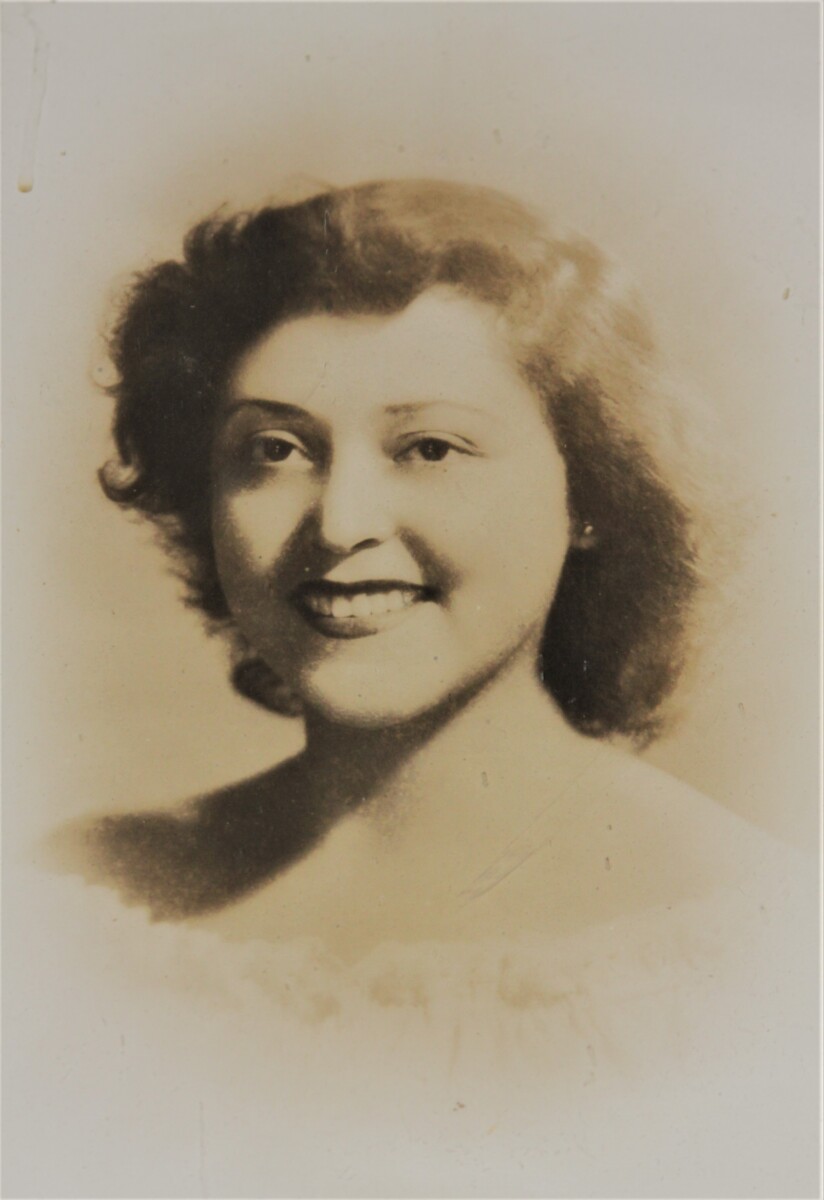municipio
PHOTONOTE:
Héctor Ruiz Mejía (Jocotepec).- The Real de Jocotepec soccer team defeated the Pumas of Jocotepec with an overall score of 3-2, becoming champion of the Municipal Soccer League in the youth category. The final match was played on March 20 at the municipal soccer field.
Lack of working streetlights leaves Chapala inhabitants feeling insecure
One of the private neighborhoods on Pino Suaréz street in the municipal capital. While it is illuminated, it is not enough, according to the neighbors. Photo: Jazmín Stengel
Jazmín Stengel (Chapala).- Although the municipal capital of Chapala has enough streetlights, the inhabitants feel insecure because many of them aren’t working or aren’t well placed, as evidenced by a tour of the San Miguel, Puerta del Horno and Plaza de Toros neighborhoods.
During the tour we interviewed more than 10 pedestrians and neighbors of the area, who said they felt unsafe despite the functioning street lights, explaining that «the lamps do not illuminate where it is most needed.”

The beginning of Privado Aguascalientes with all its lights on. Photo: Jazmín Stengel
On Privada Aguas Calientes and Prolongación Pino Suaréz, two street lights were repaired more than a year ago and have not broken down again, commented one of the neighbors, who pointed out that a well-lit street is safer for both pedestrians and residents.
A little further on, on the third bridge of Pino Suarez Street, the street lights were repaired a few months ago but have not been maintained.

Guayabos Street, one of the darkest streets in the municipality. The neighbors say they have never had electricity here. Photo: Jazmín Stengel
The residents of Guayabos Street, from the intersection with Pino Suarez and Plutarco Elias Calles, stated that they have never had any lighting.
In view of this problem, the coordinator of Municipal Public Services, Jose Antonio Urzua Gracían, stated that he is working full time to solve the lack of lighting in the municipality, despite being left with serious deficits in vehicles and tools since the change of administration.
An analysis made by Antonio Urzua pointed out that in the municipality there are about 6,000 streetlamps, but only 15 to 20 percent were functional when the administration started. «We received a dark municipality, with a great number of complaints,” he said. Six months later they have managed to solve 60 to 70 percent of the problems in the towns of the Chapala municipality.

Jóse Antonio Urzua Gracían, coordinator of Municipal Public Services in the municipality of Chapala, during the interview with Laguna. Photo: Jazmín Stengel
So far, 600 new streetlights have been purchased and 400 more have been repaired by recycling the most useful parts to others, so that only $1,200,000 pesos (about US$60,000) have been spent on repairs, in addition to 400,000 pesos (about US$20,000) on replacing wiring, which is often stolen.
The recycling strategy is useful for saving money, and also to adapt to the lamps already in place. Not all of them are the newer LED technology, and many break down and cannot be repaired due to lack of compatibility with the available parts, or because their life span has been exhausted.
Translated by Sandy Britton
Free workshops and community dining room offered by Casa de Asistencia
The various workshops offered at the Casa de Asistencia in San Juan Cosalá are free of charge. Photo: Courtesy.
Alma Serrano (San Juan Cosalá).- The Padre Adalberto Macías Llamas Social Assistance House in San Juan Cosalá, provides daily food to more than 60 elderly and low-income people. The government institution, which began operating in October 2020, also offers free workshops for children and young people.
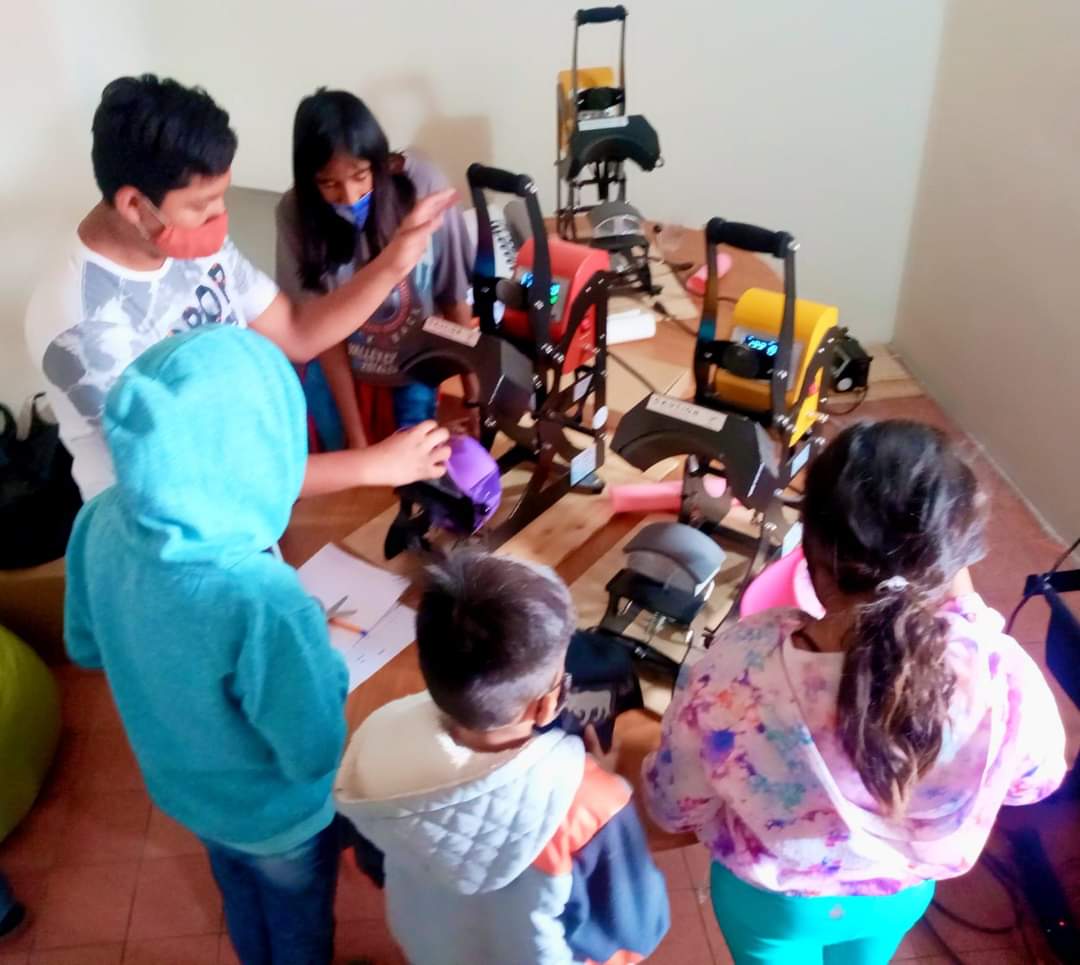
Custom printing of products such as t-shirts, mugs and caps, is one of the workshops offered. Photo: Courtesy.
On Mondays, English classes, custom product printing and physical activity are offered. On Tuesdays there are painting, stone, pottery and music workshops. Jewelry and headband making are taught on Wednesdays, while on Thursdays there are piñata making, music and psychology workshops. Finally, painting and drawing are offered on Saturdays.
For more information about the activities, the Casa de Asistencia Social Padre Adalberto Macías Llamas, located next to the plaza, is open from 9am to 9pm.
Translated by MaryAnne Marble
Relatives honor murdered policeman
Relatives of the security officer walked through the delegation of San Juan Cosalá as a tribute on March 21. Photo: Courtesy.
One of the two Jocotepec police officers killed in the confrontation with armed persons on March 10 was finally honored more than 10 days after he died. Relatives of Andrés Inclán Zamora paid tribute to his service as a security officer on March 21.
The municipal president, José Miguel Gómez López, postponed the official tribute due to violence in the municipality since holding an event with crowds of people was considered “high risk.”
Around five o’clock in the afternoon on March 21, Inclán Zamora’s relatives, people from the community and some of his colleagues at the police station celebrated the memory of the murdered policeman. The emotional event, which lasted more than an hour, began on Porfirio Diaz Street in San Juan Cosala. It was attended by about 70 people who, in tears, said goodbye to their friend, brother, family member, father and husband.
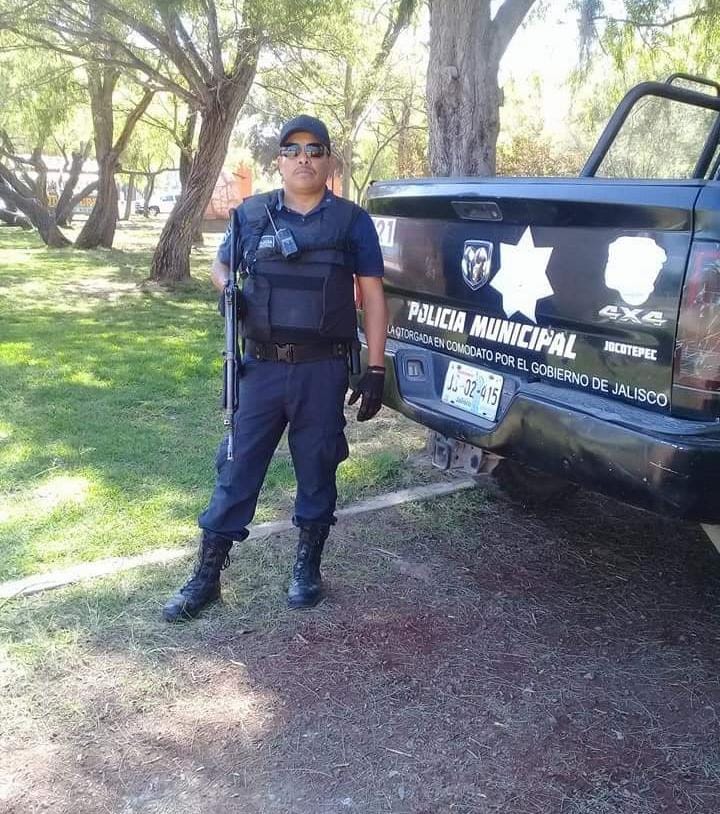
Andrés Inclán Zamora, a 45-year-old policeman, was killed in the clashes on March 10. Photo: Courtesy.
Accompanied at all times by police officers and escorted by a marching band, the relatives of Andrés Inclán recalled with nostalgia and pride stories about the life of the passionate policeman. «He was the oldest of 11 siblings, but he always took care of me and my sisters, he was very good,» said one of his sisters. She added that Inclán Zamora began his police career more than 10 years ago. Although he served as an officer off and on, «it was something he always liked, there is no doubt about that.»
Although his family said that the municipality took care of approximately 60 percent of the funeral expenses, they regretted the position and «silence» of the municipal authorities.
Translated by Elisabeth Shields
Relocation of street vendors to the Jocotopec kiosk reversed
Two windows were placed at the base of the kiosk that would serve as a display area for the merchants. Photo: Courtesy.
Editor: Contrary to the original plan, the fruit vendors located next to the DIF building in Jocotopec will not be moving to the base of the kiosk in the main square.
Semanario Laguna originally reported that the two street vendors who continued to sell on the public road would occupy the space, which has been adapted so that they could offer their products from inside the historic infrastructure. But there may be a change of plans.
The current plan is to use the space for tourist purposes, which have not yet been specified, and although we have tried to request information through social networks, there has been no response.
The original idea of putting vendors in the kiosk caused controversy among citizens, both in social networks, as well as people consulted in public, considering that it was a public property with historical importance.
«I can’t believe what they want to do. It’s an historical space, and besides, what are the poor vendors going to do locked up all day in that small space? It doesn’t seem right to me,» commented one Jocotepec resident.
«I’m not against the merchants, but it wouldn’t be appropriate. It’s one of the tourist images we have. People come to visit the town and the first thing they look for is the main square to take a souvenir photo. There are other spaces where the merchants can be located,» wrote Lupita Becerra in social networks.
In contrast, both the former director of social communication, Felipe Aguilar Montes de Oca, and one of the Public Services workers who worked on the intervention of the space, commented that the kiosk would indeed be suitable for installing street vendors.
«This adaptation work is being done inside the kiosk for only one of the fruit vendors who have yet to be relocated. As far as I know, it is for the one who has been selling here in the plaza the longest,» Montes de Oca said in this regard.
Although an attempt was made to contact the City Hall to find out the reasons why the project was revised, as well as the new project for which it will be destined, there was no response.
Translated by Sandy Britton
Trees are cemented in by the bicycle lane
A large ceiba or kapok tree choked by the concrete for the construction of the bicycle path. Photo: Alma Serrano.
Alma Serrano (San Juan Cosala).- At least three trees are being killed by the construction of the bicycle lane in the San Juan Cosalá section.
A ficus, a plum tree, and a large ceiba (kapok, a most sacred tree for the ancient Maya and symbol of the universe), located in the block between Cuauhtémoc and Tacuba streets, were left without space for irrigation or growth after the concrete was placed for the bicycle lane.
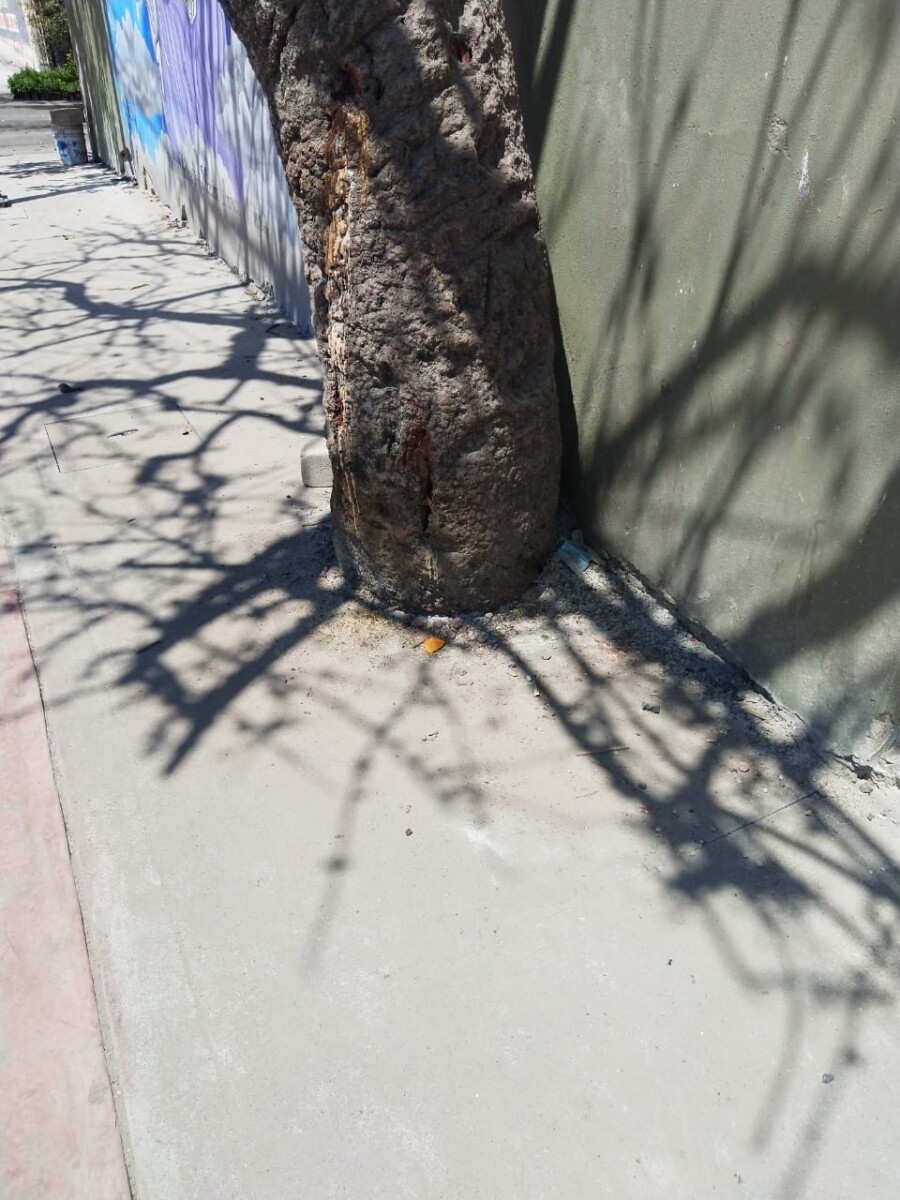
A plum tree was also left without space for water. Photo: Alma Serrano.
«I don’t know why they cemented in the trees, if the tree grows it can damage the cement. And I don’t understand why they cut other trees down» commented one of the neighbors.
In addition to these, neighbors in the area denounced the felling of other trees for the construction of the road that began in November of last year and is expected to be finished by the end of March 2022.
Translated by Kerry Watson
Imputan por abuso sexual infantil a sacerdote de Ixtlahuacán de los Membrillos
El párroco Alejandro C. fue detenido por elementos de la Fiscalía del Estado e imputado por el delito de abuso sexual infantil. Foto temática: Internet.
Redacción.- Por los delitos de abuso sexual infantil agravado y corrupción de menores, un sacerdote de Ixtlhuacán de los Membrillos fue detenido por la Fiscalía del Estado.
Se trata de Alejandro C. de 40 años de edad, quien es párroco eclesiástico de una parroquia ubicada sobre circuito Los Olivos y la calle Olivo Portugués, en la colonia Los Olivos II, en el municipio antes señalado.
De acuerdo con las investigaciones el agravio ocurrió el pasado 15 de febrero contra una menor de edad y posteriormente se denunció. Personal ministerial de la Fiscalía Regional del Distrito V, reunió la carpeta de prueba donde se presumía la comisión de los delitos, por lo que se solicitó una orden de aprehensión.

Mediante redes sociales, el Arzobispado de Guadalajara emitió su postura respecto a la denuncia contra el sacerdote. Foto: Especial.
El sacerdote Alejandro C. fue detenido hace unos días y puesto a disposición del Órgano Jurisdiccional ante el cual el Ministerio Público procedió a la imputación por los delitos de abuso sexual infantil agravado y corrupción de menores.
Durante el desarrollo de la audiencia inicial se estableció que el sujeto permanecerá en prisión preventiva oficiosa por el plazo de la dilación constitucional, en tanto el próximo lunes 4 de abril se dará la continuación de la misma.
Por su parte, mediante un comunicado, la Arquidiócesis de Guadalajara informó su disposición para colaborar en la investigación a la que será sometida el párroco, además de que aclaró desconocer el caso denunciado debido a que no se tuvo contacto con la familia de la víctima.
“Queremos señala que, de parte de la Arquidiócesis de Guadalajara, estamos en la mejor disposición de colaborar con las autoridades correspondientes para que se esclarezcan los hechos y se proceda de un modo justo, aportando los elementos que nos soliciten para deslindar responsabilidades”, se lee en el documento difundidos mediante redes sociales.
New director for Chapala national women’s soccer team
Óscar Daniel Cruz Ruiz, new director of the Chapala 2022 Women’s National Team, and municipal president Alejandro de Jesús Aguirre Curiel during the recording of the presentation video.
Jazmín Stengel (Chapala).- Oscar Daniel Cruz Ruiz was presented through a video on social networks on March 10 as the new Technical Director and in charge of the Chapala Women’s National Team for the Jalisco Cup 2022 by president Alejandro de Jesús Aguirre Curiel.
The graduate in Physical Culture and Sports who is also the current director and coach of the Centro Educativo de Fútbol de Alto Rendimiento (CEFAR) in Chapala, will be in charge of selecting and directing the women who will represent the municipality in the third edition of the Copa Jalisco, a state amateur soccer tournament.
Cruz Ruiz expressed his desire to support the sports process as much as the athletes who will be part of it. «We have a lot of enthusiasm and we trust in our generations of girls who have been playing very hard in the municipality, so that everything will flow with good results,» said the new coach.
The first call for the Chapala 2022 National Team auditions was made unofficially a week before the presentation of its Technical Director, supported by the assistant Juan Miguel Siordia Vázquez, however, only four participants came forward.
A day after the presentation, Cruz Ruiz, also a nutritionist, took full charge of the official call on March 11, when he selected more women from Chapala to form the basis of the new team.
President Aguirre Curiel said he has great confidence in Cruz Ruiz, since in addition to being skilled in the field, he has maintained a great love for the municipality. «He has a great trajectory and above all he loves Chapala, that is why I have asked him to be part of this team…. and I know he can do it,» said the mayor.
The members of the Chapala 2022 Women’s National Team will be presented in a later edition.
Translated by Kerry Watson
Martha Rodríguez García recognized for defending the hills of Santa Cruz
Martha Rodríguez García dedicated her recognition to the people who have fought for the defense of the hills El Junco and El Cántaro.
D.Arturo Ortega (Chapala).- For her activism in community-strengthening, her environmental defense of the territory and traditions of her community, Martha Rodríguez García, a native of Santa Cruz de la Soledad, Chapala, was recognized with the «Hermila Galindo Acosta» award, granted by the Commission for Substantive and Gender Equality of the Jalisco State Congress to outstanding women from Jalisco, in the framework of International Women’s Day. Hermila Galindo Acosta (1886-1954) was an early Mexican feminist, suffragist and writer.
On March 8, Rodríguez García received recognition along with nine women from Jalisco and a Civil Association. She has been fighting for eight years to defend El Junco and El Cántaro hills from private interests that seek to divide this natural area.
«I am happy to have received this recognition for the eight-year struggle. We have fought for the environment, for young people, children and the elderly,» said Rodríguez García from the sofa in the living room of her house, who is perhaps the only one with a security and video surveillance system in Santa Cruz de la Soledad.
Since 2014, people outside the community deceitfully bought several properties from residents and “ejidatarios” or communal landowners, with money diverted from the Pension Institute of the State of Jalisco (IPEJAL) for the purpose of building 3,066 single-family homes, 812 duplexes, 400 homes for the elderly, a hotel, clubhouse, golf course, area for horseback riding activities and a hospital contemplated in the luxury megaproject to be built in the hills of El Junco and El Cántaro, in Santa Cruz de la Soledad, thanks to the creation of a trust that would benefit the company «Santa Cruz Inmobiliaria S. A. de C.V.»
Ejido or communally-owned lands are governed by an Ejidal Committee in charge of executing and enforcing the agreements, as well as the representation and administrative management of the ejido.
As Ejido Commissioner, Rodríguez García was able to foresee that the ejido lands would cease to exist, so most of the ejidatarios refused to cede El Cántaro and El Junco. This has meant a battle for the territory that has entailed «stress and fatigue, even for my own children and we always live with the worry of them doing something to us,» she said.
However, it has not only been hardships that Rodríguez García describes, because in spite of all the circumstances and the sacrifices she has had to face, with a serene and calm look; she mentioned that she has also obtained some satisfaction.
The case of the dispute over the hills has been at a standstill since 2016, when two members promoted the suspension of the 2015 Ejidal Committee, and then with police removed the committee that Rodríguez García presided as commissioner. A new Ejidal Committee was then formed in the multipurpose room of the temple of the Virgen de la Soledad.
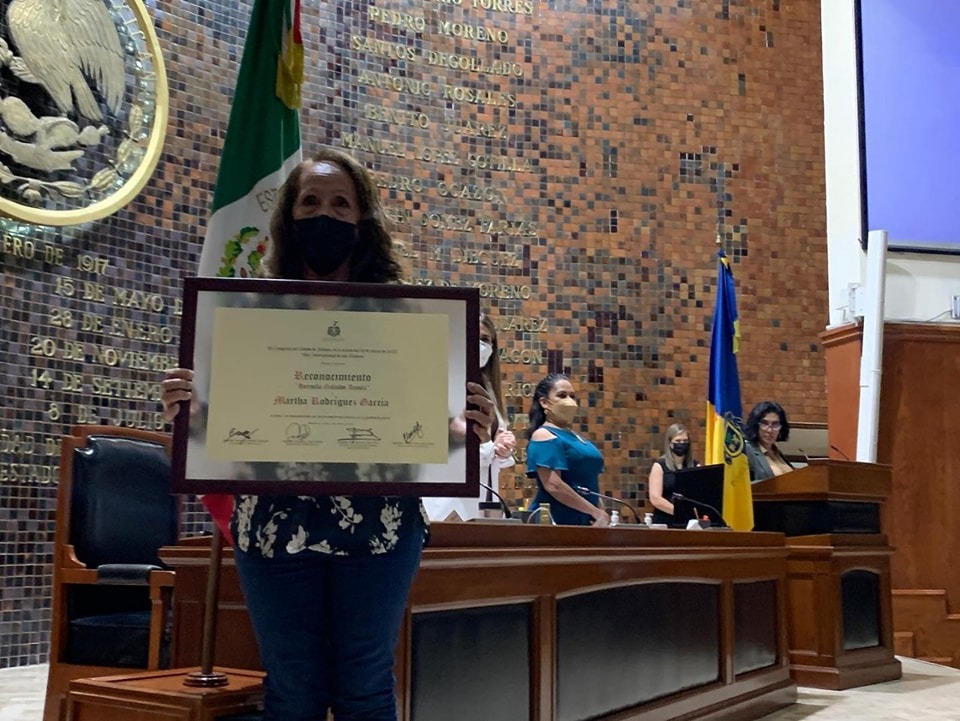
Receiving the «Herminia Galindo Acosta» award at the State Congress.
Once the 2015 Ejidal Committee was removed, an election was called again and in 2018 Rodríguez García was again elected as commissioner, but the National Agrarian Registry did not want to deliver the credentials for that period because there were acts of suspension registered for that period, so, since then the ejido has not met.
Currently they are waiting for a new election to form a new commissariat, but the Agrarian Prosecutor’s Office does not want to deliver the new list of ejidatarios in order to be able to hold the election and seek the least possible obstacles to nullify the elections by the State Government, and some ejido members whose businesses would not be favored by this new slate.
For this reason, it is necessary to wait for the Agrarian Tribunal to request the updated list of ejidatarios in order to carry out the election of the new Ejidal Committee, which process would be carried out in the presence of agrarian organizations, in addition to the Agrarian Attorney General’s Office, which would call for this new election.
Currently there are 177 ejidatarios or registered owners of communal land, of which 55 have passed away and another 44 live in the United States, leaving only 78 ejidatarios living in Santa Cruz according to the latest registry.
Since September 2021 and thanks to the efforts of the Intermunicipal Association for the Protection of the Environment and Sustainable Development of Lake Chapala (AIPROMADES), El Junco has been registered as part of a project to increase water catchment in 252.59 hectares of that territory (about 625 acres) with the support of the United Nations (UN), Coca-Cola and Arca Continental.
Rodríguez García, 67, is a woman of work more than words, and works in El Junco making paths as protective borders. In a few weeks she will reforest with endemic trees such as mesquite, guamúchil, huaje, tepehuaje, palo dulce, papelillo, tepame, osote, among other species to prevent landslides and increase water catchment in the Santa Cruz dam.
She recalls that as a child she always accompanied her parents in their farm work. At that time there were not so many houses, the town was smaller and many of the people supported their families by farming; that is why the hills of El Cántaro and El Junco are so important to her, but the most important thing is to preserve the space as a protected natural area for future generations.
Translated by Kerry Watson
Lakeside Chronicles
Seño Cata doesn’t like pictures. ‘I am ugly,» she tells me. But her photograph contradicts her. Photo: María Reynozo.
María del Refugio Reynozo Medina
At 93 years old, Catalina Valencia Navarro walks around the house alone, leaning on a walker with an impeccable face. “I am very happy,» she says with a deep sigh.
She doesn’t need to say it, it is announced by her slow but sure steps, her beautiful luminous eyes and the gentle smile framed by her burnished hair. She wears black shoes that reveal her perfect toes, a long khaki A-line skirt and a soft almond-colored blouse.
Catalina Valencia retired at the age of 82 after 62 years as a teacher. “It’s a mistake to be in teaching if we don’t like it,» she said. In addition to being an elementary school teacher, she co-founded the Magdalena Cueva High School project in 1963 with the principal Antonia Palomares Peña. There she taught English and geography.
The first complete elementary school was started by Palomares because at that time in Jocotepec, elementary school was only up to fourth grade.
“The principal trusted me a lot, she was energetic and very prepared.”
“Cata» as her pupils called her, tells of her experiences with facts and names as if it were yesterday.
«The principal commissioned us to go all over town inviting the children house by house.” They also went to invite children in the towns of San Cristóbal, Zapotitán, Huejotitán and El Molino.
The first high school began in a borrowed building, the José Santana Elementary School. In the afternoon, after the elementary school children had finished their day, the older students attended school.
Mario González Barba taught biology and was the godfather of the first generation of students.
Priest Santiago Ramirez taught drawing and Engineer Jorge Ibarra Galvez taught chemistry.
It was a cooperative high school and the students paid 30 pesos a month. The teachers earned 15 pesos an hour if there was enough money to pay them. A board of trustees made up of people from the community managed the school and was transparent about the resources.
In 1970 the board of trustees managed to build a separate school with contributions from the efforts of the parents, the teachers, and the community, even the masons contributed their labor. The high school was a milestone in the history of Jocotepec. For many, there is a Jocotepec before the high school and Jocotepec after the high school.
In 1982, under the premise of the President of the Republic that there should be secondary schools all over the country, an authority came to Jocotepec to offer a secondary school. The municipal president at that time, responded that there was already a secondary school and allowed its appropriation for the creation of the official secondary school. That action stripped the school from the founding teachers. The teachers were fired. For Valencia Navarro and her colleagues, it was a repudiatory act. “I don’t even want to say the name of that authority because it still hurts me.»
As a high school teacher, something that always filled her with satisfaction was to see those children who, with so many difficulties, achieved their goal. Some students came from other communities, walking across the hill to get to school. The teachers adjusted the classes to the students’ schedules and even taught on Saturdays. Valencia Navarro recalls that a boy from Potrerillos would sleep in his friend’s garage so he could attend school.
«I loved the children from San Cristóbal very much because they were very noble, they left a beautiful mark on me.»
When Valencia Navarro retired, the high school had 300 students. She still remembers them.
“I don’t know if they loved me,» she says, «but many still visit me, and I love them.”
In 1987, «Seño Cata» (short for «Señorita» similar to «Ms.» or Missus) retired with 36 years of service in education. Her mission did not end there. A Zacatecan priest in San Juan Cosalá sought her out, Alberto Macías Llamas, who ran a boarding school. Valencia Navarro went for six months and stayed for 21 years serving the 200 children from rural communities.
Although Catalina was director, for her the most beautiful thing was not the important position, but the closeness with the children in the classroom as a teacher. «I always liked my students to be the first, never the last, and I would get the first places in the achievement contests.»
When I ask her to show me her awards, she agrees, but first says, “Wouldn’t it be a chocantería (impertinent)?”
We walk to the hallway where her degrees and awards hang. Those decorations and the recognition of her students are the most valuable things for her, although they are not proportional to the amount of the pension she receives.
«When I was a child, I saw my mother die. I stuttered and it wasn’t until I was nine years old that I overcame it and was accepted in elementary school.» The classroom was in what is now the Jocotepec municipal marketplace. «We were so poor in the town that we didn’t even have a school. One of the classrooms only had walls and no roof. Some teachers would take the children home and teach them there.» She remembers her teacher Felicitas Palomares with love; she was very important in her childhood. Perhaps that is why «seño Cata» is also a very dear teacher for her students.
If she were born again, she would be a teacher again.
Translated Nita Rudy
© 2016. Todos los derechos reservados. Semanario de la Ribera de Chapala


